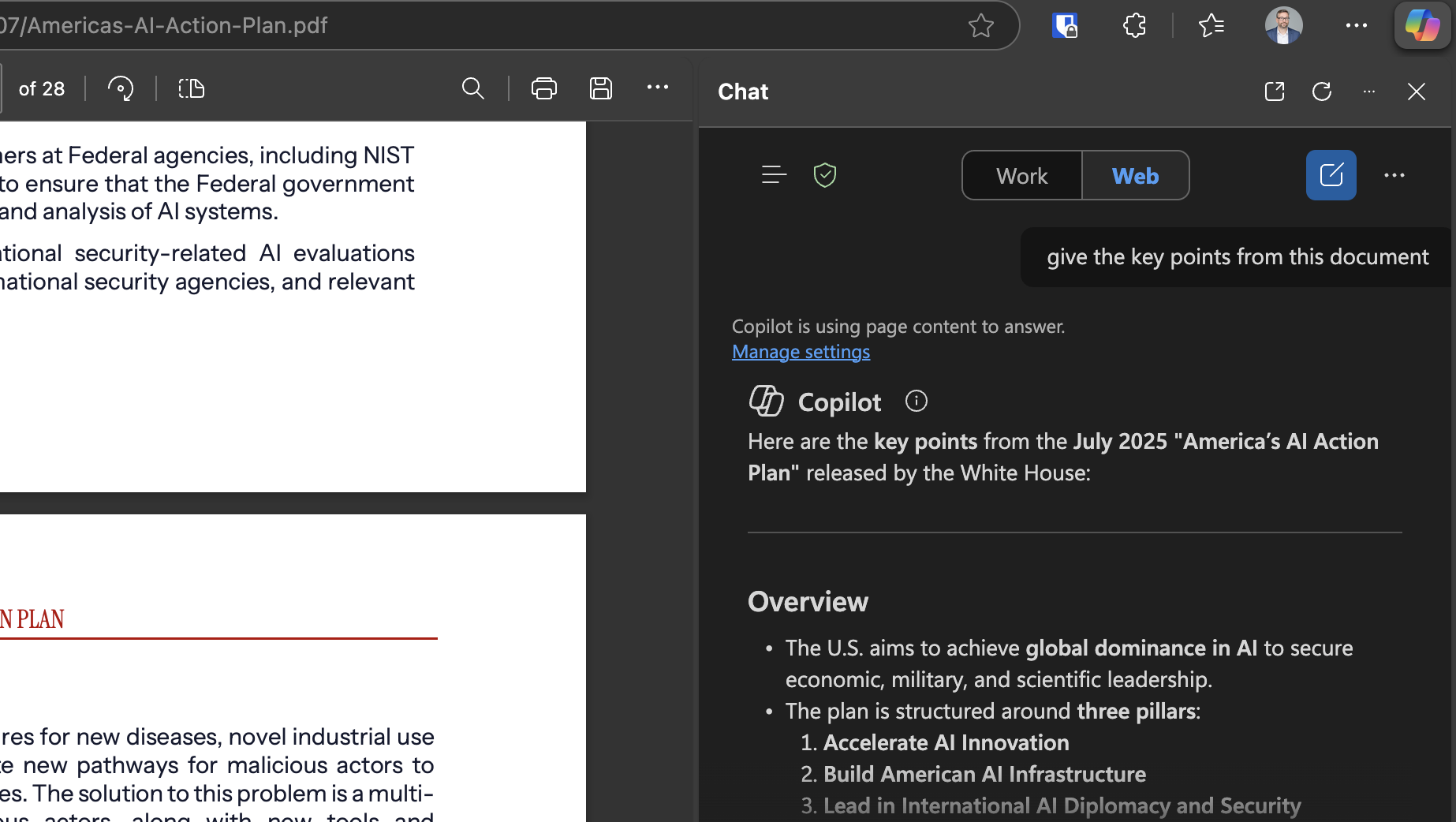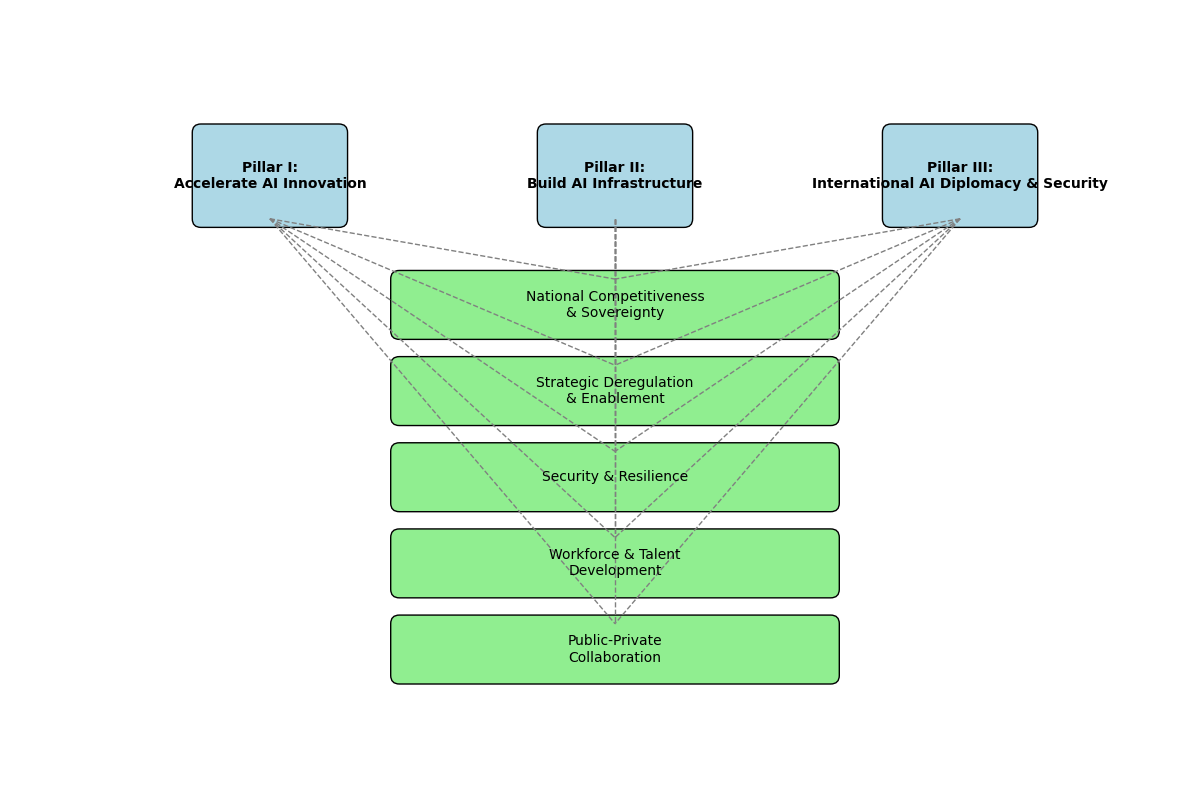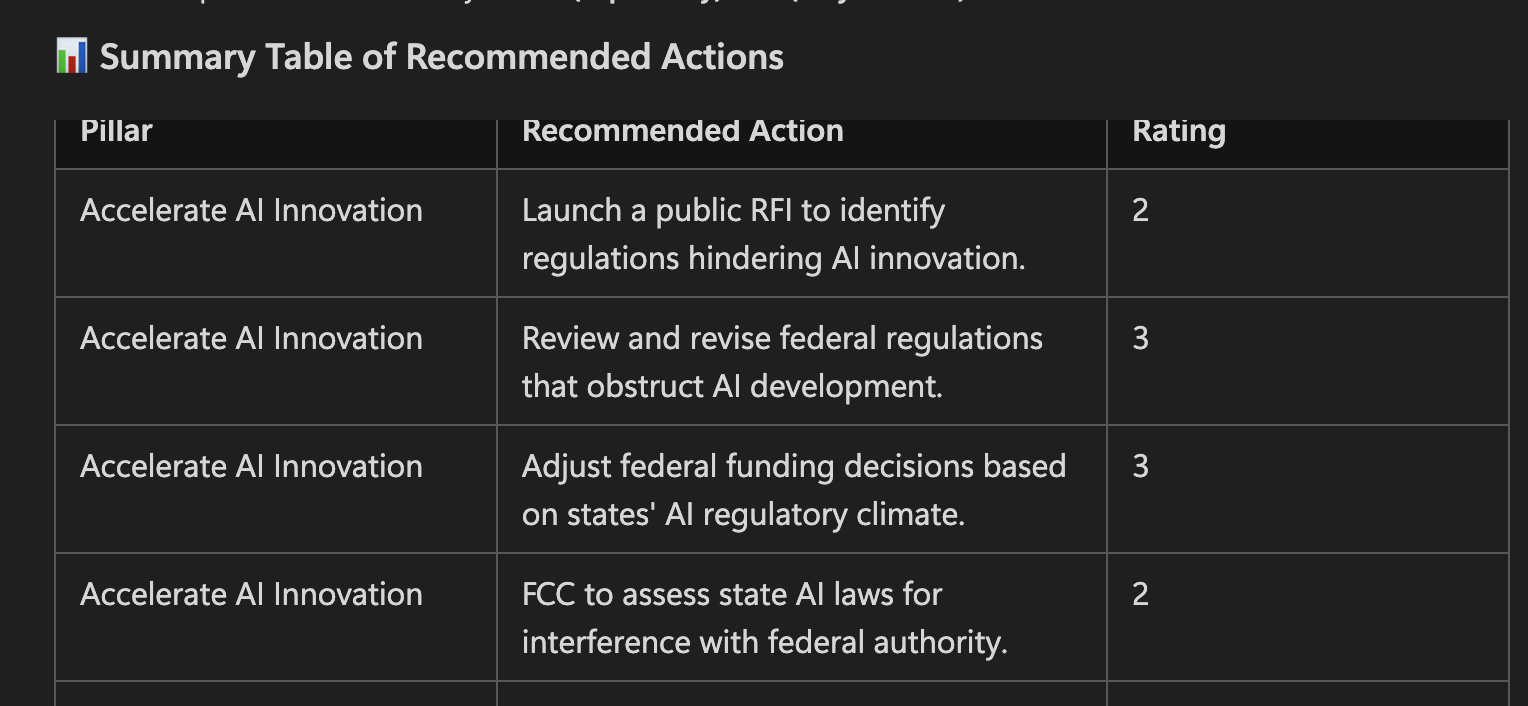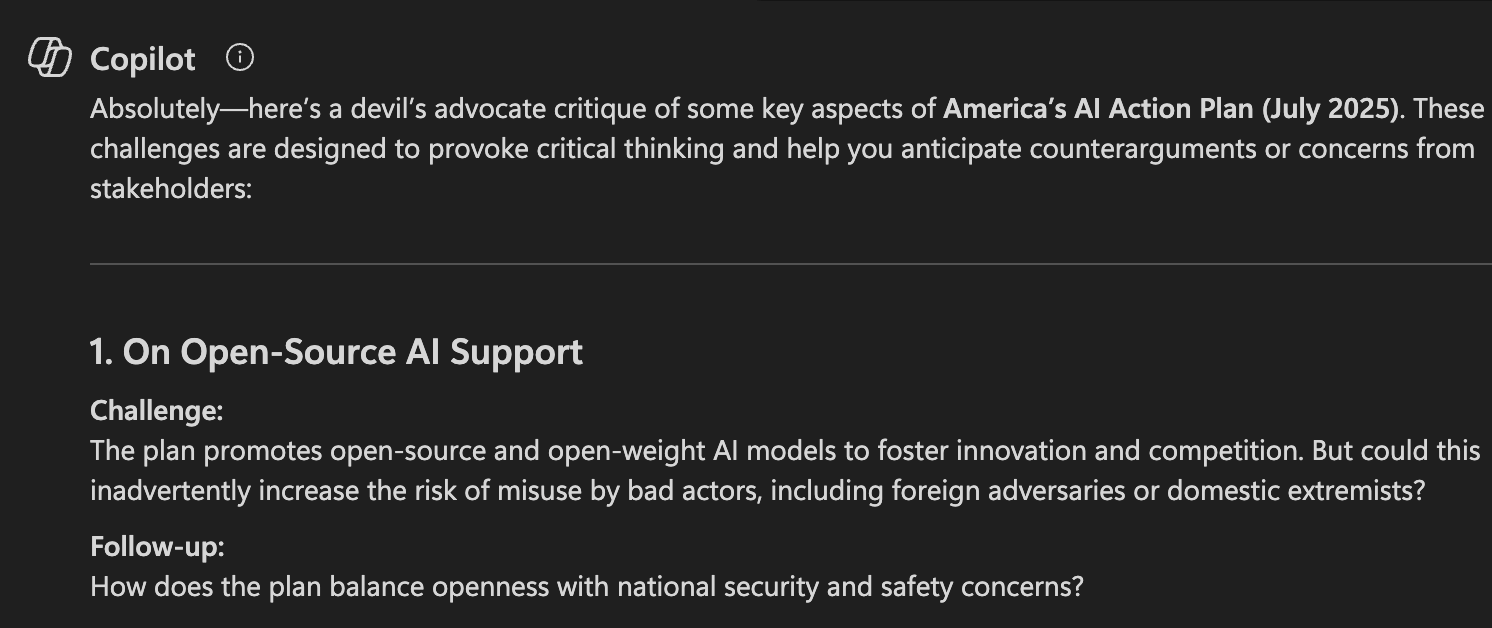Everyone’s talking about AI transforming how we work but how often do we actually use it to think better? America’s AI Action Plan was unveiled earlier this month. It focuses on 3 core pillars:
- Accelerate AI Innovation
- Build American AI Infrastructure
- Lead in International AI Diplomacy and Security.
The full pdf is here: https://www.whitehouse.gov/wp-content/uploads/2025/07/Americas-AI-Action-Plan.pdf.
Rather than write a post about the interesting things in this plan, I wanted to pivot this a bit and talk about how I use AI to interpret this plan to get a better understanding of it. We hear a lot about AI and how it can supercharge learning and understanding, but we see less examples of this in action. My approach works for me, and will evolve as my understanding and the tools evolve. This is also pretty basic, but it is intentionally so because some of this doesn’t have to be complex to immediately get better insights.
First, the plan is 24 pages long. I start with reading it end to end because all too often in our attention limited world, no one reads past the headlines. AI makes it far easier to get the cliff notes on anything, so is anyone reading anything any more?
BUT, I don’t spend time taking notes or worrying about understanding all the details. I read relatively quickly through it.
Next I ask AI to summarize and give me the key points. I am using Copilot built into Edge for this and it works well. This helps reinforce what I just read and also helps me see if there are areas I may have glossed over or missed in my reading.

Based on this, I ask some follow up questions. Given there are 3 pillars, I want to see if there are themes that underpin them. From my reading I feel 2 overarching themes stand out to me: that AI is of national security importance and that energy production and infrastructure build out are critical to success. Copilot also surfaces up a couple of others and helpfully draws a nice visual for me.

I then ask Copilot to give me some questions I should be thinking/asking about in relation to this action plan in a given role, such as CTO of a major enterprise. This is helpful because Copilot gives me a series of questions such as:
- Should we adopt or contribute to open-weight AI models?
- What are the IP, security, and competitive implications?
- How can we tap into federal programs for AI workforce development?
- Are there apprenticeship or retraining initiatives we can partner with?
- Should we engage in regulatory sandboxes or Centers of Excellence?
- Could this accelerate our time-to-market or de-risk innovation?
This gets me thinking about ways this could impact my business or how some of the customers I work with maybe thinking about this.
Now each sub area has recommended actions and there are quite a few. I ask Copilot to just pull all those out, summarize each one and even give them a score of difficulty to implement. The neat part about this is that it takes these actions and creates them in a single tabular summary to make it easier for me to digest. The rating is basic to start with but I could dig into this more if I want to.

Finally, I have Copilot help me think through what challenges to aspects of this might arise. What might be push back or gaps to think through? A simple prompt gets me a good starting point: “play devils advocate and challenge some key aspects of this”

So, as you can see, nothing ground-breaking but using AI here as a companion to help enhance my understanding of a lengthy doc without me having to do a lot of heavy lifting. The real power of AI isn’t just in automation, it’s in amplification. It helps us think deeper, faster, and more strategically.